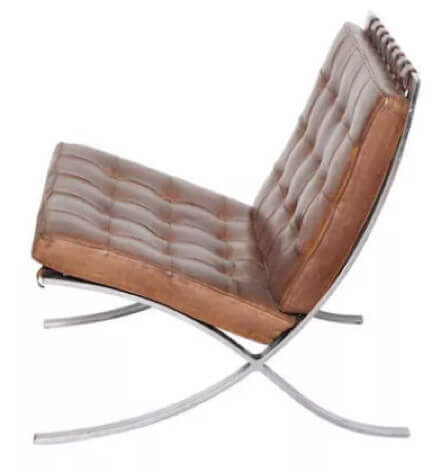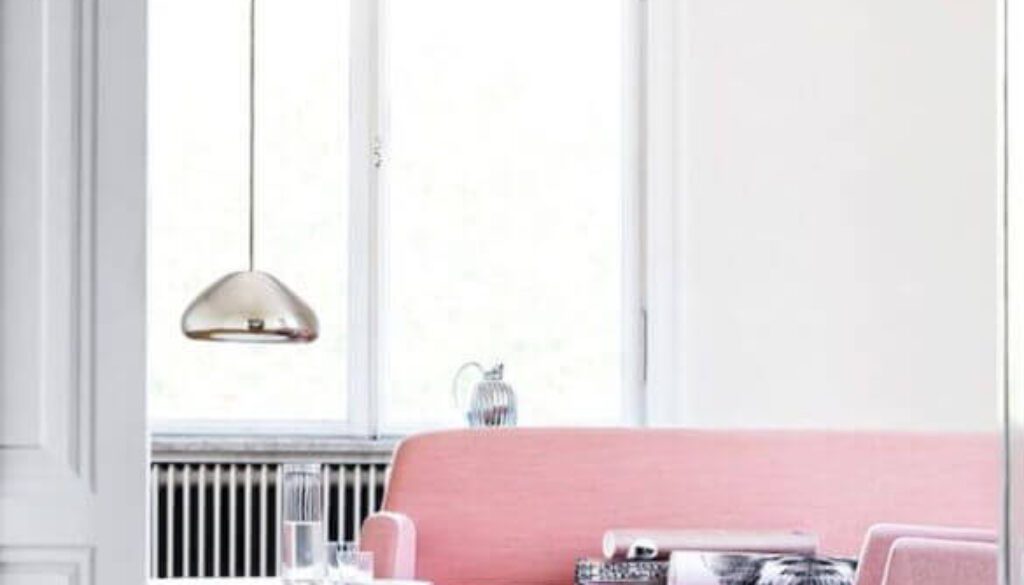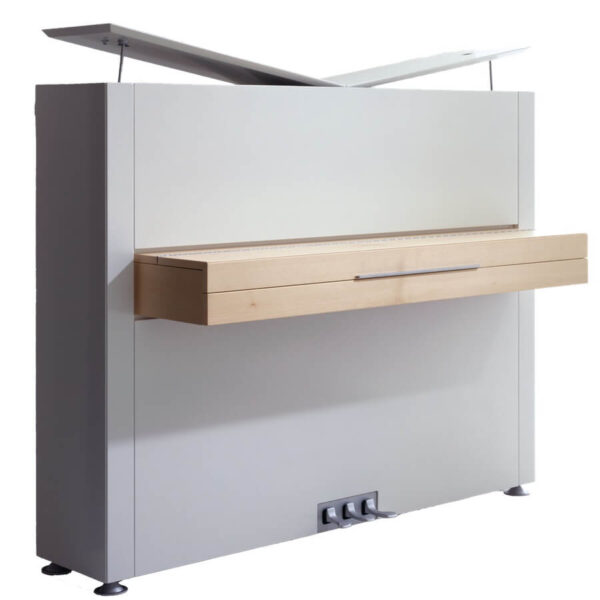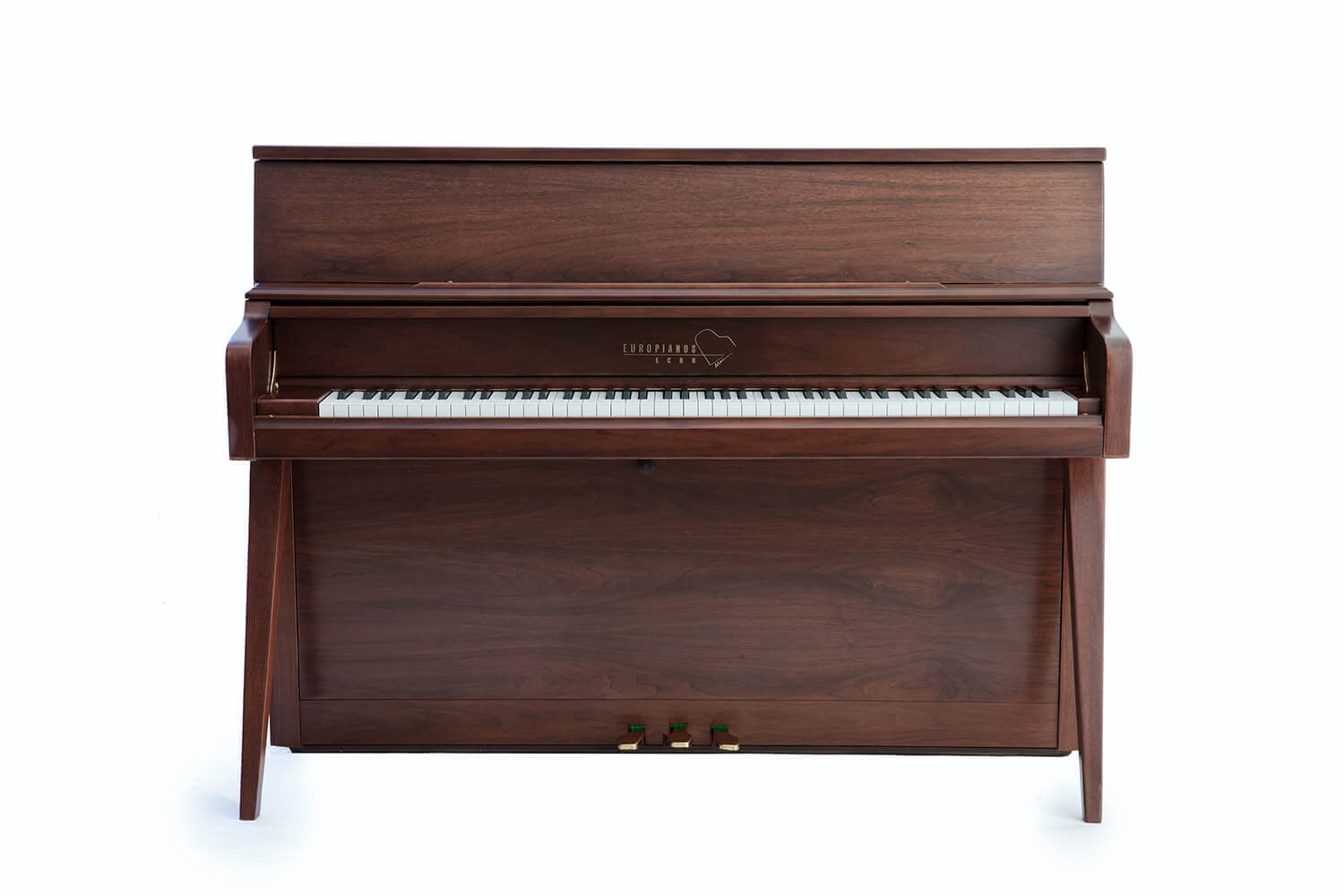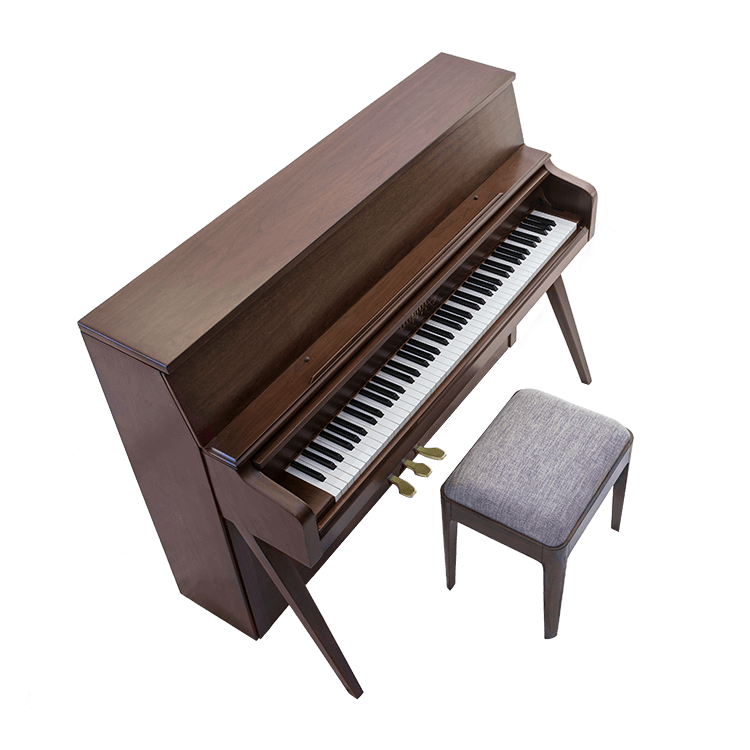History of Mid Century Modern Design
What Is Mid Century Modern?
There have always been creative people ahead of their time. The roots of modern design can be traced all the way back to primitive cave art. But for the purpose of categorizing eras of design and style, Mid Century Modern as a design category for architecture, furniture, textiles and objects of business and home could be said to span the 1930’s to mid-1960’s. That means that some designers, some artists, some architects had already begun to shape what would become a world-shaking new style in the mid twentieth century before it actually exploded.
The Bauhaus Movement
To be more accurate, however, we must look back to the founding in 1919 of the Bauhaus, a German art school in Weimar, by architect Walter Gropius. The motivations behind the creation of the Bauhaus lay in anxieties about the 19thCentury’s soullessness of manufacturing and its products, and in fears about art’s loss of purpose in society. Creativity was being lost to commerce, and the Bauhaus aimed to unite them, rejuvenating design in all aspects of everyday life. Such famous artists as Paul Klee, Vasily Kandisky, and Josef Albers and others taught the study of materials, color theory and formal relationships in preparation for students’ specialized studies.
In 1925, the Bauhaus moved to the German industrial town of Dessau, created a department of architecture and launched the most influential period of their work. Gropius designed a new Bauhaus building, which is still known as a landmark of modern, functionalist architecture.

A Swiss architect, Hannes Meyer, head of the architecture department was an active communist, and installed Marxism into the curriculum. Gropius resigned in 1928 amid battles and criticism. Meyer was replaced by Ludwig Mies van der Rohe who enhanced the architecture curriculum. Whenthe Nazis came to power in 1930’s, the school was closed.
But during the time that Bauhaus flourished, minimalist design in furniture and textiles defied any previous concepts. In collaboration, metalworkers, artists, architects and designers used cellophane, fiberglass and (acrylic or Plexiglas) plastic, space and physics to transform design.
Many of the key figures of the Bauhaus migrated during the dangerous years of World War II. Several Bauhaus artists were arrested and killed by the Nazis; others fled to exile in America.
The Bauhaus artists found perhaps their greatest success in America, disseminating their ideas and designs. Josef and Anni Albers taught at Black Mountain College in North Carolina for 16 years, after escaping Germany. The school was founded in 1933 and liberally based on Bauhaus concepts.
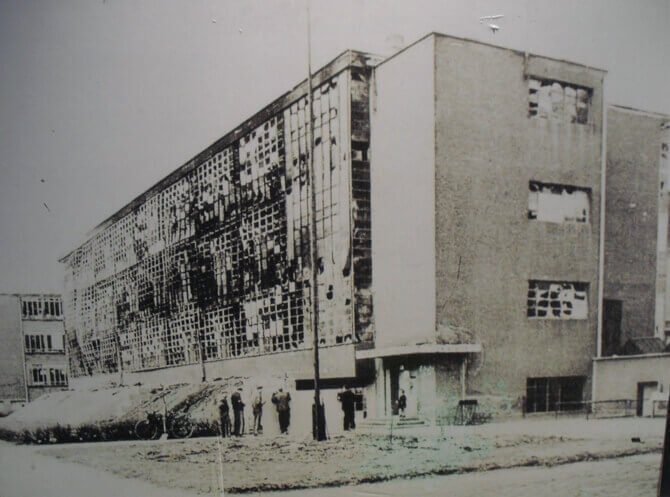
Gropius and Breuer taught at Harvard’s design school, and Moholy-Nagy founded the Chicago Institute of Design.
Ludwig Mies Van De Rohe, the last Bauhaus leader, along with Philip Johnson in 1957, designed the Seagram Building, While the building itself stands as an icon of modernism, the empty space in front of the building was also innovative. An open, urban plaza set the building back from Park Avenue and created a gracious pedestrian space. Often emulated, such plazas have become a cliché, but, at the time, Mies was making a bold statement. He helped make Gropius’s modernist architecture the mainstay of New York City skyscrapers.
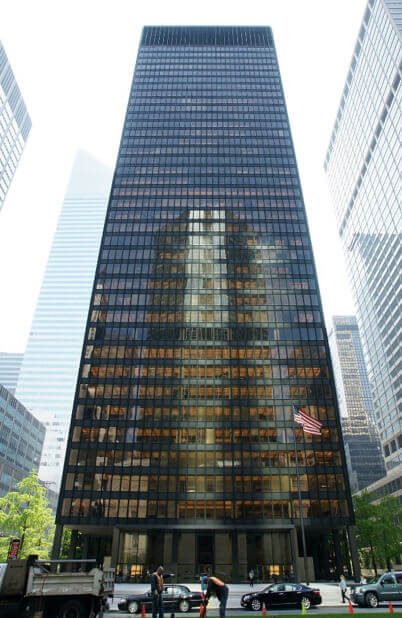
Florence Knoll, a former student of Mies, realized that the new skyscraper style demanded modern furniture and interiors to match, so she licensed Bauhaus and other modernist designs for mass-production. Today, Knoll is still one of the only distributors of genuine Bauhaus furniture — their success an indicator of the lasting appeal of Bauhaus design, nine decades later.
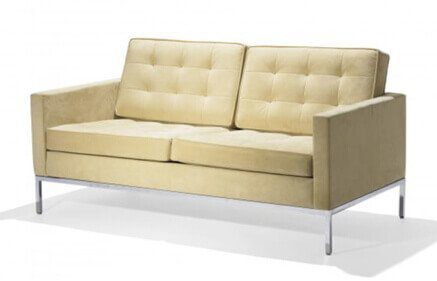
The International Style
While Bauhaus was a huge influence all over the world, there were other architects and innovators in America, France, Finland and the Netherlands who were not German, and when Bauhaus moved to America, another more inclusive name was born. The Getty Research Institute defined the minimalist, modern style of architecture that dominated until the 1970’s, “The International Style.” It is characterized by the same Bauhaus principles of volume over mass, flat surfaces with areas of glass and a general rejection of ornamental and repetitive modular forms. Most people think of the International Style as another general name for the spare, geometric designs that are now called Mid Century Modern or Bauhaus.
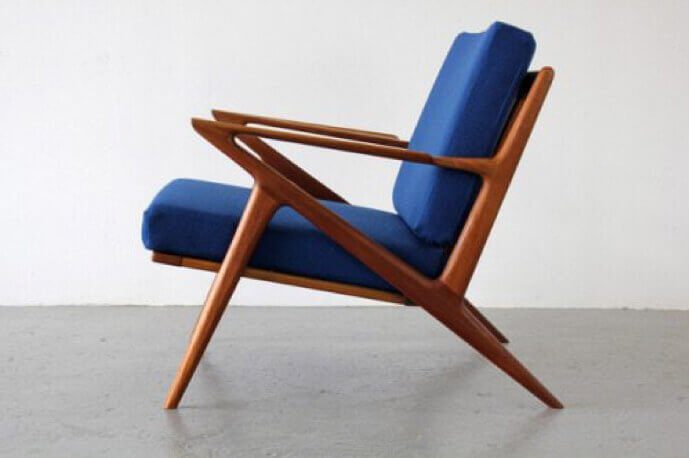
Why Did Mid Century Modern Come Into Vogue?
The 1950’s were an iconic age. The biggest world war in history had just ended, and Americans who had been living on rations, and war effort shortages were suddenly back to work with disposable income. A newhousing industry sprang up to provide replacements for the boxy pre-war cottages that had been the norm. These craftsmen style homes had “updated” the old Victorian style homes earlier in the century and often featured an inviting front porch, but with the end of the war, another housing style was ushered in.
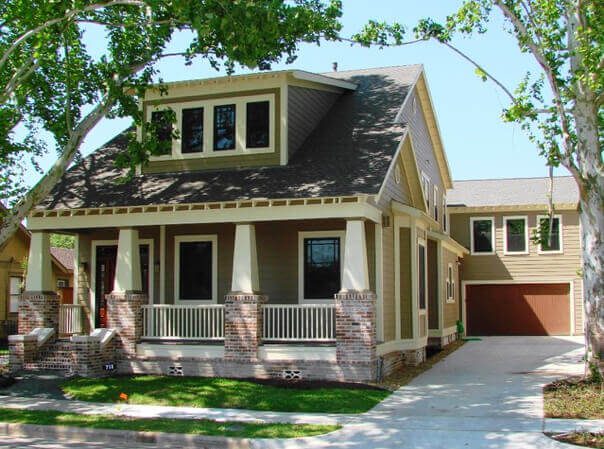
New subdivisions and affordable housing were the rage, and the “ranch house” emerged as an example of the new wave of design in architecture. The mid-century designranch houses are still being built to this day. As former neighborhoods got gobbled up by developers, and streets crowded with additional lots, the builders’ focus shifted from the former invite-the- neighbors-in porch ambiance in favor of a more private, fenced backyard with a patio. Open brazier grills became a staple, and large paned patio doorsevolved to let nature inside.
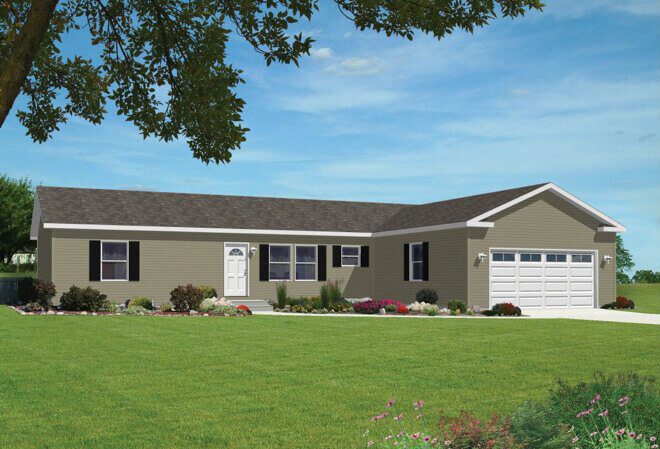
To enhance the mid century modern architecture, new plastic materials emerged for flooring, countertops and fixtures, in modern shapes and colors. Inexpensive track housing was made available for “the boys coming home” and while there was a “sameness” to many of the models, they endured as stable, well-built and basic homes.
Between1946 and 1965, in California, other homes were going up, more than 11,000 of them, all designed by modernists commissioned by builder Joseph Eichler. Eichler, a former dairyman, had been inspired by living briefly in a Frank Lloyd Wright home. (Wright, an architect who had earlier built over 500 iconic modern structures, believed in designing structures that were in harmony with humanity and its environment, a philosophy he called organic architecture.) Eichler houses, found throughout Northern and Southern California (and even outside of New York City), are some of the most celebrated tract residences in the United States.
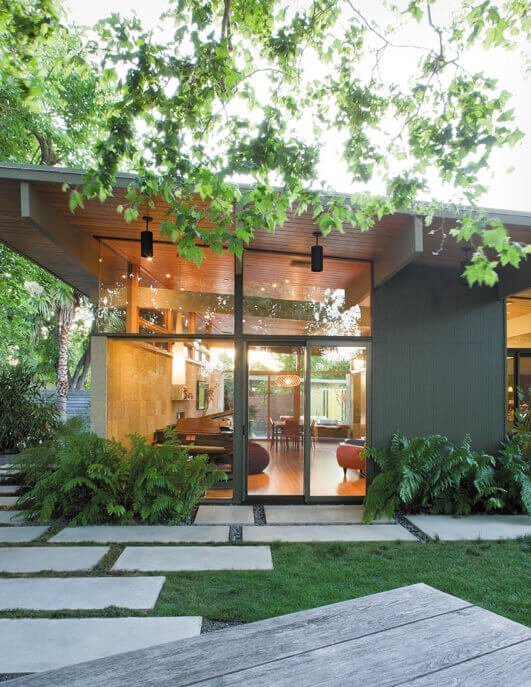
It stands to reason that innovative interior design and furnishings would follow suit. Middle class, post war Americans were gaga over the latest modern furniture. The new world, the bright future was a big step up from the woes of past economic depressions, rations, and warfare.
If you are old enough to remember the 1950’s, you might recall some of the furniture in your own home, as I do.
Our Formica kitchen dinette set was aqua, with chrome legs. Formica, a material first developed for industrial purposes, was widely used for Mid Century Modern designtabletops, especially dinette and kitchenette sets.
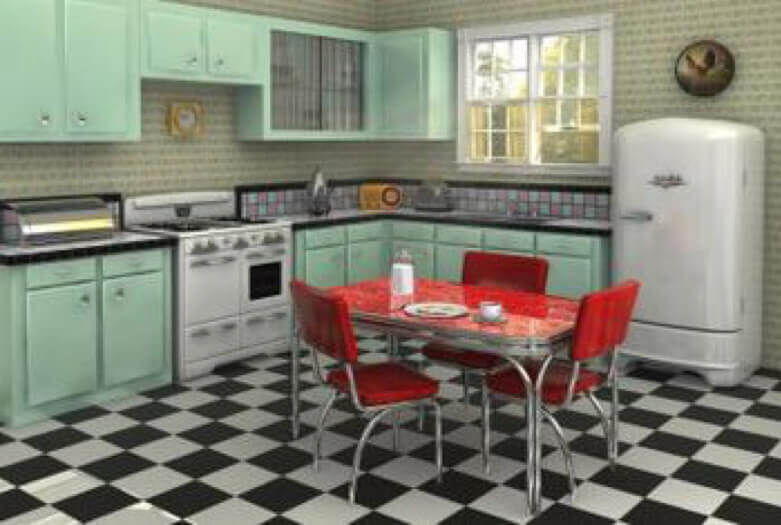
Over the span of the 1950’s and early 1960’s “space-age” materials were being developed and used to make this brave new world truly new. Plastics came into their own, rather than being used as faux (inexpensive) imitation of wood furniture. A lot of non-traditional materials including plywood, Plexiglass, vinyl, and metal changed the look and feel of furniture, as well as opened up the opportunity for wonderful bright colors and choices of contrasts.
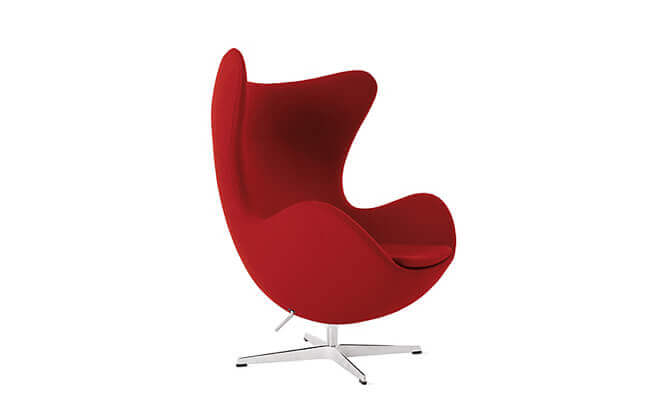
Just like the clean lines of the ranch style houses, furniture took on an understated. minimalist look. Designers began to play with organic and geometric designs, making the eye move with color and contrasting materials. Simplifying for functionality. Since an architect had proclaimed in 1896 that “form follows function”, no furniture before Mid Century Modern decorbetter exemplifies his point. If esthetic beauty should come from the pursuit of functionality, rather than simply for decoration or styling, the innovators of Mid Century Modern interior designsmade it their credo.
The Mid Century Modern furniture designers who emerged on the scene are of the best known and beloved of our time. Such names as Charles and wife, Ray Eames, Arne Jacobsen, Isamu Nogochi, Edward Wormley, Aero Saarinen, Alexander Girard and George Nelson are only a few of the hugely successful and famous game changers of the era.
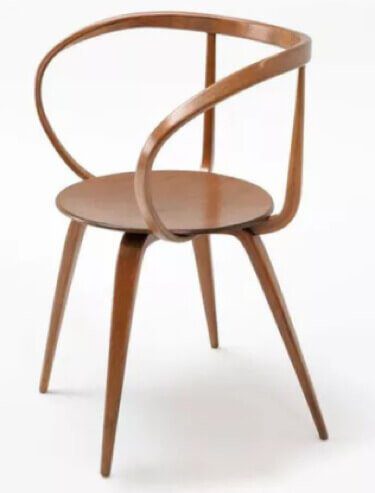
The Henry Miller lounge chair and ottoman is one of the most quintessential of mid century modern pieces, designed by Charles & Ray Eames. This design is exhibited in the Museum of Fine Arts in Boston.
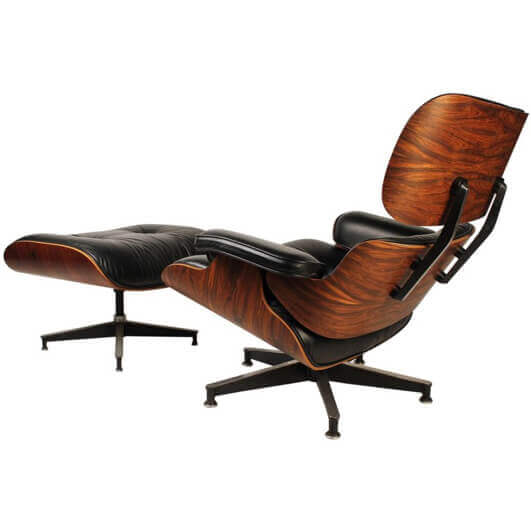
Mid Century Modern furniture is beautiful and fits functionally with the lifestyles of most people in the 21stCentury all over the world. It may have come into fashion because of a world war, but in the confusion and turmoil of modern life, we can’t think of any style better to soothe and sanctify your personal living space.
The style continues to be popular, and the manufacturers continue the style lines, embracing the mid century modern because it has a timelessness to it. The Museum of Modern Art (and many other museums all over the world) pay tribute to it. But practically speaking, the designs just feel fresh, and are hard to improve upon.
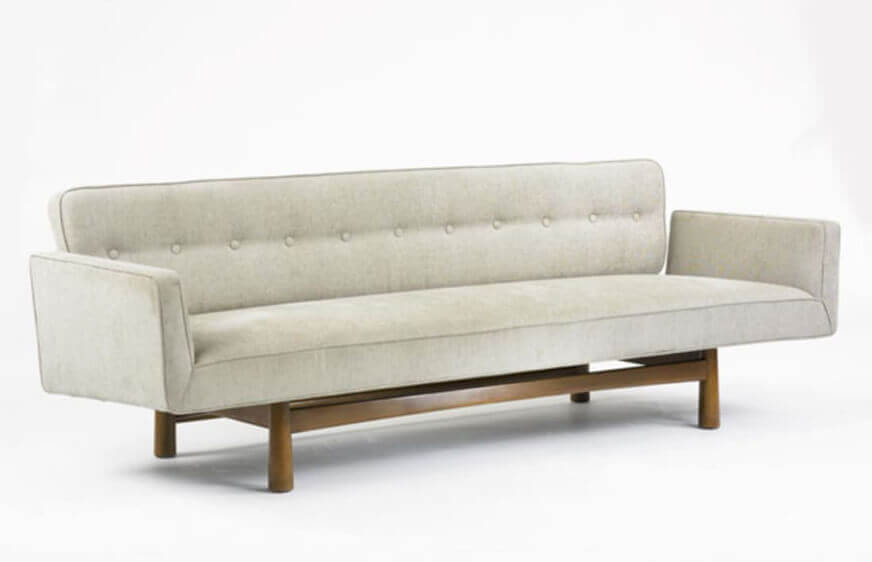
How To Decorate With Mid Century Modern
Yes, Mid Century Modern is a gorgeous style and most of us would like to have our home reflect some of those sleek, clean lines — but like everything else in this world, there are a few tips to doing it right.
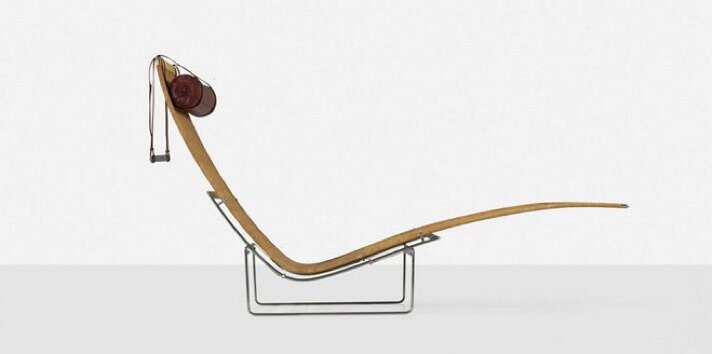
Less is More
Ludwig Mies Van der Rohe used the phrase “less is more” regarding architecture and design, meaning the simplicity of lines and lack of ornamentation. But the concept holds true for Mid Century Modern when it comes to interior design as well. To have a room crammed full of mid century modern décor, be it authentic or replicated pieces would be overkill. Just as one can have too much of a good thing in most aspects of life, it is certainly true in decorating.Balance is the secret.
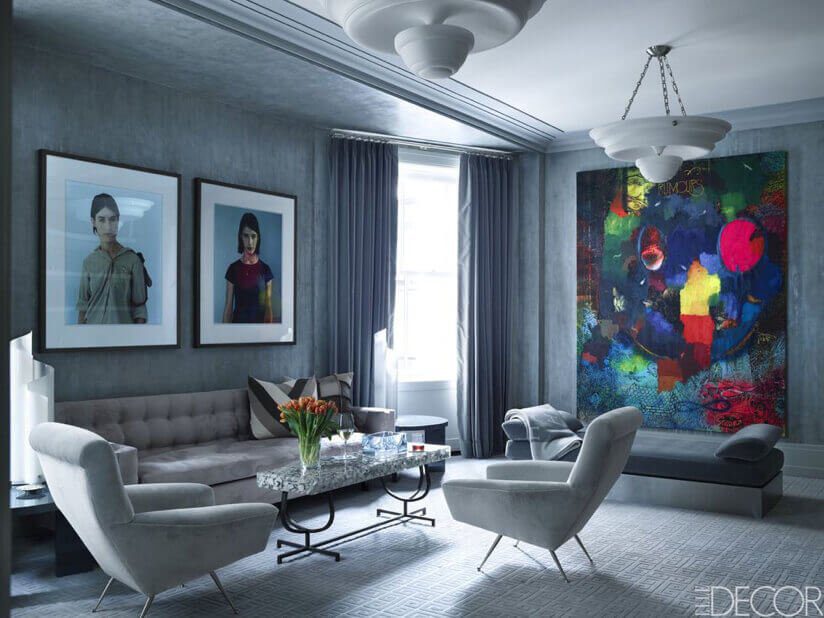
To get the proper balance, it helps to study the history of the style, and then to take a slightly eclectic stance when choosing the full modern mix. The idea is not to replicate a 1950’s room, (which might come off dated and copycat), but to use broad strokes to create the feel of mid century modern. By choosing one or two representative pieces, like the sofa or the armchairs, the rest can be filled in with other functioning décor that enhances the room. By studying and understanding the style, you can find other furniture that echoes it, in the way of plain wooden cabinets, cork and teak, metal and plastic tables, Danish, wicker and Shaker pieces. Belike the brave of heart who go truly eclectic and use what works. We would advise against using excessive patterns unless you know how to do it, like below. By keeping the color range similar, the patterns don’t leap out and bite you, but look smashing. We love the subtle echoes in the pieces of this room!
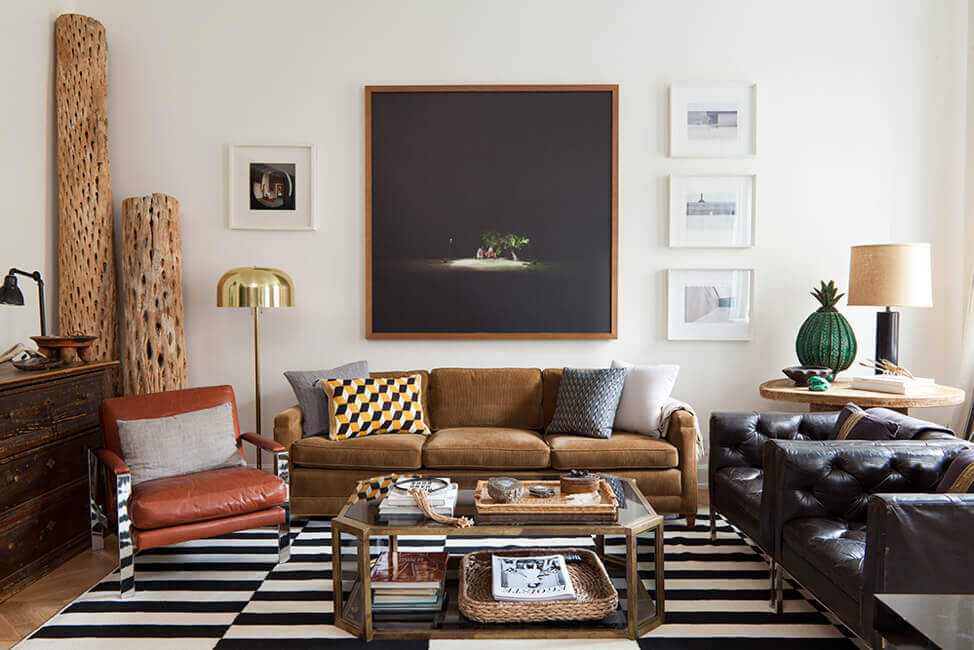
Authentic mid century modern pieces are still available. Indeed, some never stopped being manufactured, but they are usually pricey while excellent replicas are made by many of the top furniture sellers, and budget pieces can be found that are spectacularly well done.
Once you have done enough research to understand the distinguishing features of the style, you will find many other pieces to echo that look, pieces that fit your budget and needs without buying original museum pieces. Don’t be afraid to mix midcentury with pieces from other periods. You may be surprised how well some things blend, with an eye to color, shape and spatial balance.
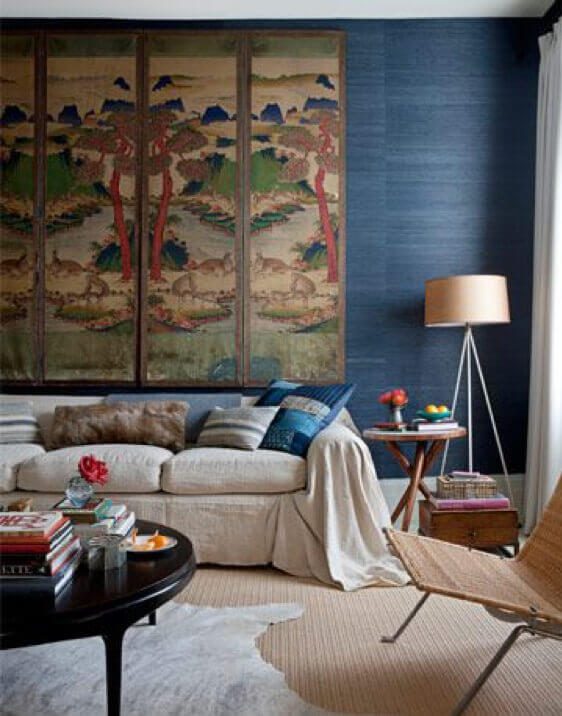
Another trick to avoid your mid century modern décor from looking too uniform in style is to use furniture and accessories of different heights. Like good art, the idea is to keep the eye moving from place to place, so it works not to have everything at the same level. Lighting (such as the arc lamps) did a very good job of lifting the eye from the low-slung sofas and coffee tables that define the style. Art (large and small) (see the oriental screen in the photo above) can do the same job.
Where can you find a Mid Century Modern Piano?
Sure, you can google and find Mid Century Modern furniture everywhere. From the high-end Herman Miller and Kroll pieces right down to Crate & Barrel, furniture is available in this wonderful style. But if you’re a pianist, you may wonder how to find a piano these days to fit your new mid century modern décor? Euro Pianos Naples had customers coming to them with this exact question. It might be easy to find an Eames or Barcelona chair, but they want a piano that fits into that special room as well.
Any number of modern pianos today will echo this décor. The Sauter uprights which are stunning, look to be made for Mid Century Modern in their sleek, clean lines.
But because we had specific requests for affordable mid century modern piano, we designed our own upright with the time-honored lines and silhouette to fit the demand.
What About Mid Century Modern Style Lighting?
They say the devil is in the details, and for a devilish good result in decorating, they would be right. Lighting a room can be an art, but the wonderful designs in mid century modern styles are worth pointing out. Generally speaking, the style of lamps is soft and rounded, “bubbles” and globes. Whether they be rice paper lamps or hanging cylinders, simplicity usually reigns.
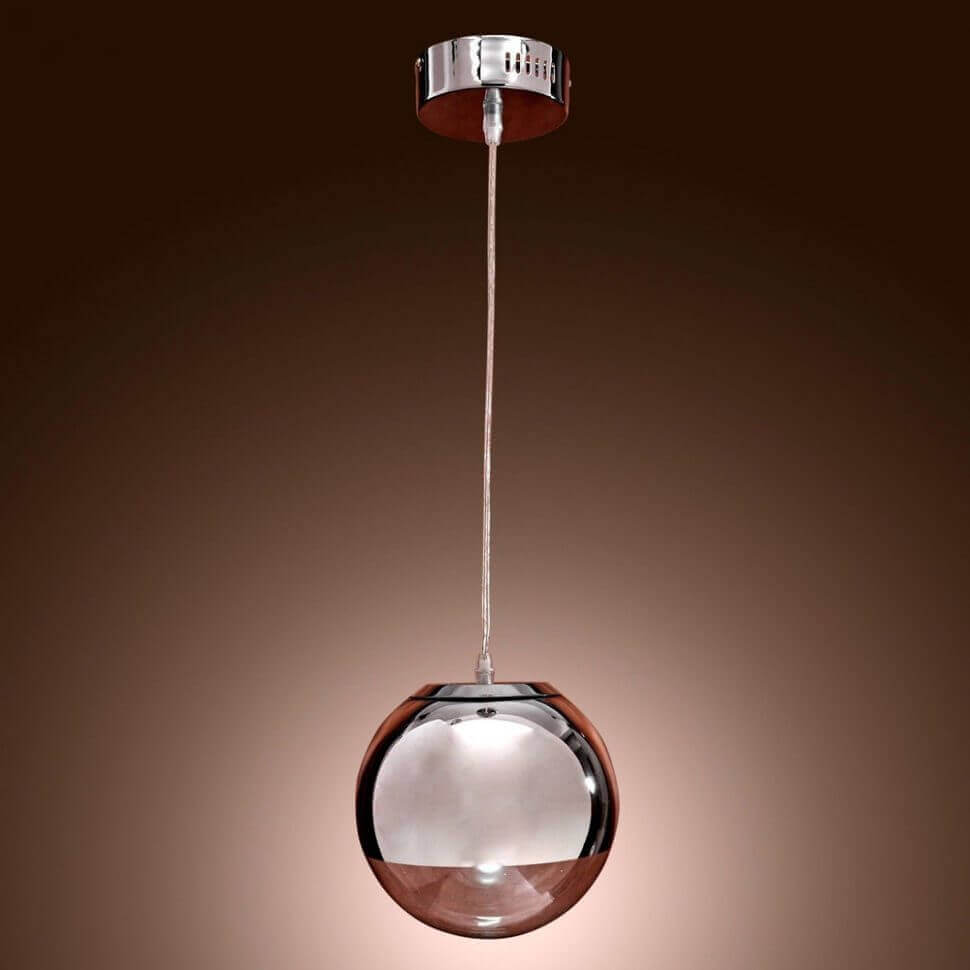
The arco lamp is an iconic mid century modern design that has never left us. It seems to look good in any décor, and it’s a wonderful space saver, as a floor lamp.
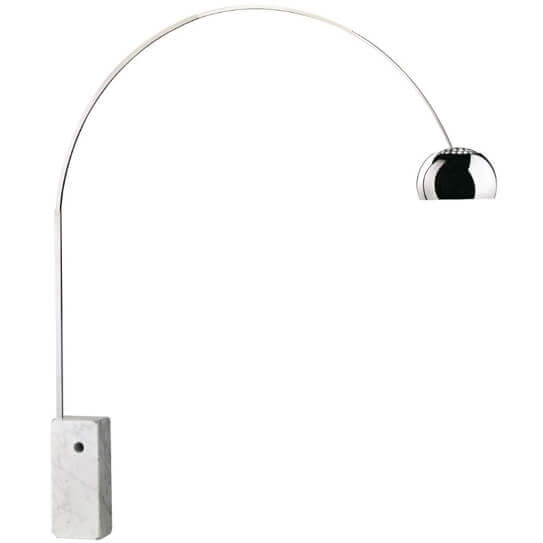
Table lamps often reflect the same simple structures of the furniture peg legs, adding charm to already simple lines.
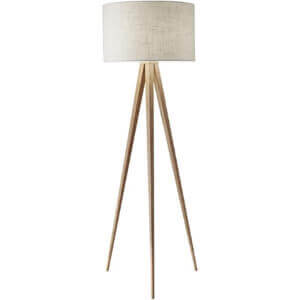
The opposite of the soft, round designs was the “star shape” or “sputnik” shaped multi-bulbed fixture which also represented the style, in many surprising variations. These were used to enhance the very stark décor of some rooms where straight lines prevailed.
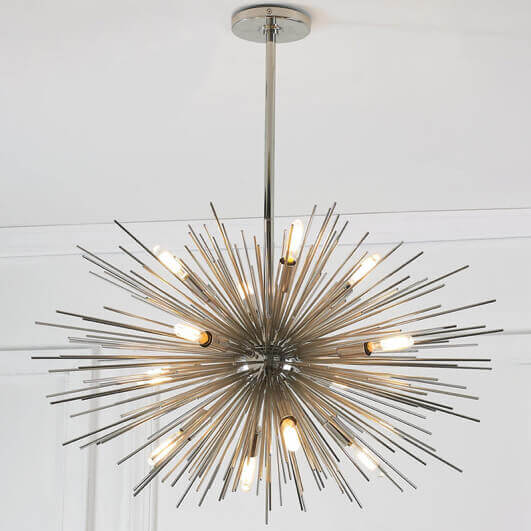
What are the Mid Century Modern Colors You Should Use?
Because the style ranged from Bauhaus to International and spanned two decades in the making, a wide palette of colors emerged over the years. Traditionally, in America, bright hues popped in via Formica and plastic, but colors settled down in the ‘60s and earth tones trended. Pink was always a mid century modern color giveaway.
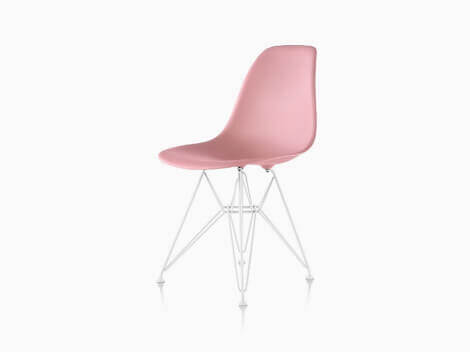
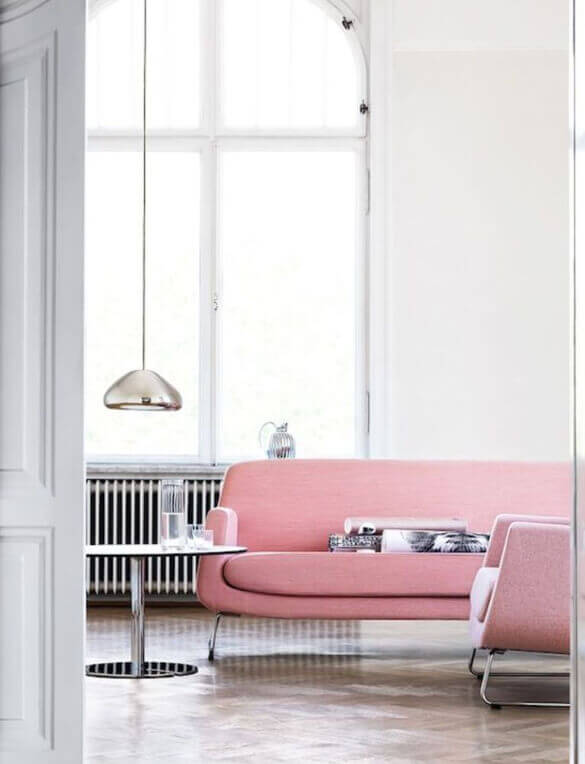
These days, we think any carefully chosen palette will work, be it neutrals with pops of color, or a totally coordinated theme. One hint might be to choose your most important and eye-catching pieces first, and design around them. Even black and white can be uniquely used to make a room unforgettable. Look at the combination of rich wood and no color in this dining room.
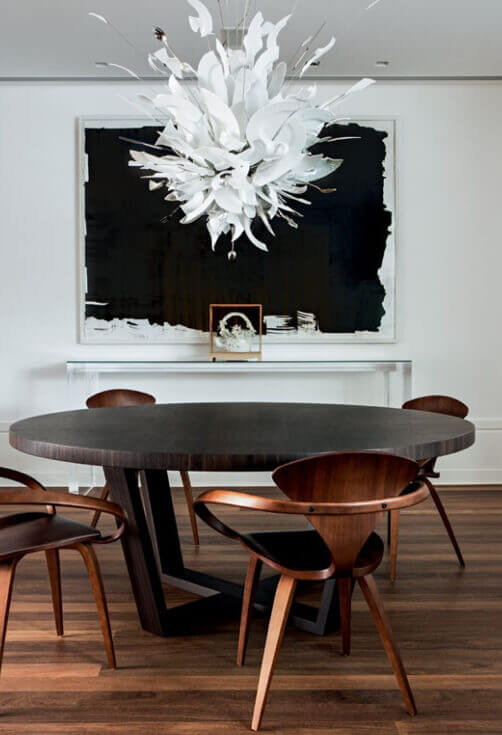
What Are the Finishing Touches on Mid Century Modern?
Getting back to the origins of this style, some of the kindest things you can do to any room is to bring nature and art to bear. Rocks, plants, shells, and bones are all used in variations that are not only visually gorgeous but enhance the humanity of your living space as well. If you have favorite items, things that are touchstones for your own memories and adventures, such keepsakes, incorporate them to add life to your experience of the rooms.
Like lighting, accessories are an art, and choosing small things that delight you, will help you love your space.
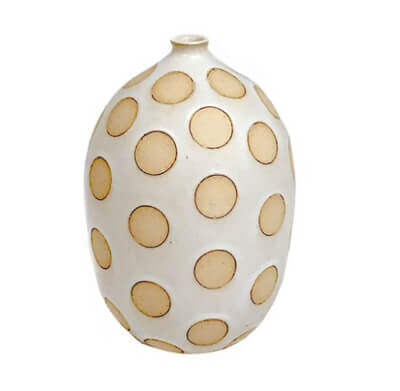
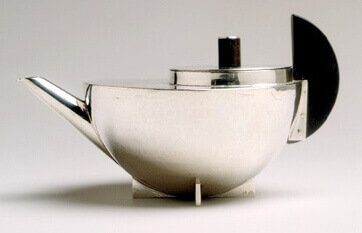
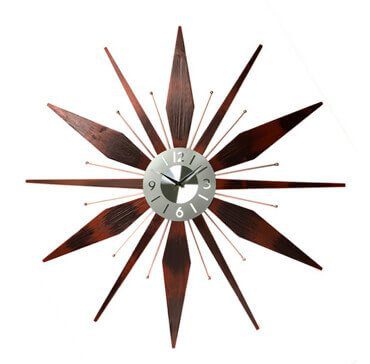
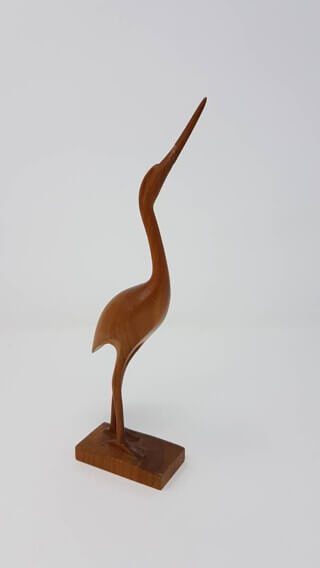
The finishing touches to a room can be very personal, very aesthetic, and also just be that pop of color that brings the elements together, as any good decorator or interior designer will tell you. Even throw pillows can provide exciting accents that don’t cost much to accomplish.
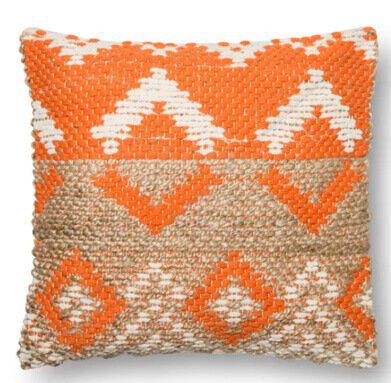
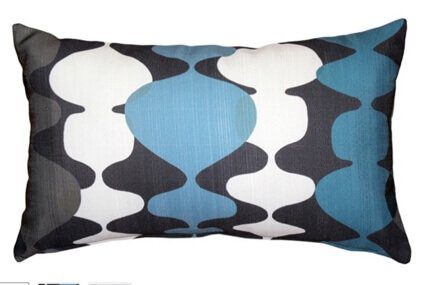
Whatever you decide on, we hope you are fearless and smart about it. Go Bold!
